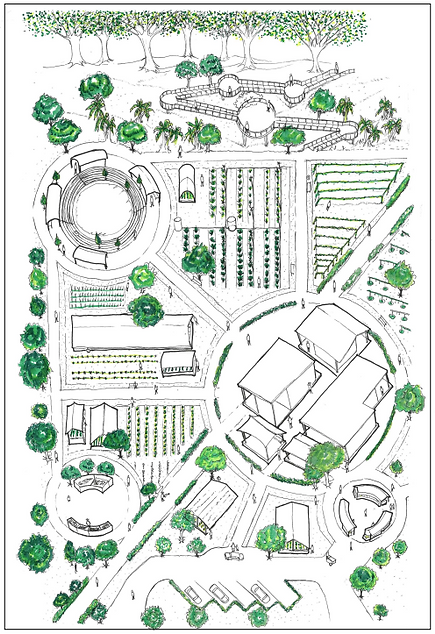
PROJECTS BRIEF
COMMUNITY ARCHITECTURE
In Semester 4, themed “engaging environment and community”, the studio explores design by harnessing environmental qualities and conditions for human and environment sustainability through a project with a specific community of users within a given context. The projects involve studies of precedents on design projects that are responsive to the environmental conditions and sustainable issues. Using the precedent studies, students explore the environmental poetics of the building enclosure that responds to the basic natural context such as the sun, wind, heat, cold, energy issue and existing building context (which has clustered built forms for example community centre, nature appreciative centre, research centre). Considerations should be given to the complexity of the program, site topography and vegetation, socio-cultural events, and variety of passive strategies for sustainable design. The design work should contribute to and merge harmoniously with environment and the site and provide the best of experiences for the community of users. Students are required to demonstrate applications of knowledge gained from Architecture and Environment module from prior semesters and integrate research from Asian Architecture module. The environmental elements and poetics of the context within a complex spatial typology creates a design narrative that aims to foster a sense of community.
Project 1A: Site Analysis & Design Response
Site Analysis & Design Response establishes an understanding of the context for intervention. In assigned tutorial groups, students will conduct site visit to identify the physical as well as the intangible qualities that shape the character of the site. Engagement with site users will establish the needs of the community at site. As the Design Response of the Site Analysis stage, students will work with their tutorial group to draw up a new plan for the demarcated site area through the design of a Kebun Komuniti Plan, which will serve as the base for Project 1B: Architectural Allotment and Project 2: P3KU Kebun Komuniti Center.




Project 1B: Design Esquisse – Architectural Allotment
Produced in parallel with Project 1A, Project 1B deals with the understanding of materiality in relation to user experience in the Kebun Komuniti Plan. Within the context of each tutorial group’s Kebun Komuniti Plan, students will break up into smaller groups (3-4 students) to design an Architectural Allotment, which is intended to showcase architectural form as a construct of materiality for a proposed set of activities related to the cultivation of plants. The exploration of themes centred around the cultivation of plants together with requirement for seating, shading and storage will relate to the programmatic requirements in Project 2.

Project 2: P3KU Kebun Komuniti Center
The project calls for the design of a P3KU Kebun Komuniti Center within the suburban neighbourhood of USJ18. This site is currently the location of a non-profit project for disability teens employment. Students are required to provide full design proposals incorporating findings from site analysis and precedent studies. Students will generate narratives that respond to the environment and community within the given context and explore environmental poetics of building enclosure’s design solutions that reduce environmental impact utilizing various complex typologies of spatial organisations and a variety of passive strategies for sustainable design. The design should contribute to and merge harmoniously with environment and site and provide the best of spatial experiences in fostering a sense of community



Conclusion
For me studio 4 was one of the most enjoyable semester yet. I had an amazing tutor and the projects was also great to partake in. we had a site visit, which was fun and manage to interact with locals. in semester 4 I began to feel like an architect as I am design for the people. i also have great appreciation for all buildings around me. as i am begin to understand the amount of effort and knowledge it takes to bring a building to life. thank you Mr.Nazmi and all the tutors who helped me this semester








